Browntail Moth Update #7- June 10, 2022
The rain we’ve had on and off this past week is a welcome sight for farmers and residents living in browntail-infested areas alike. The precipitation has undoubtedly helped the development of diseases in the browntail caterpillars. This week we are pleased to report we observed at least some fungus-caused mortality at all of our monitoring sites. At a few sites, it wasn’t easy to find live caterpillars to take measurements from, although we did find some after looking on trees a short walk down the road.
Both staff and members of the public have noticed the effects of this disease activity in some of the areas predicted to be hardest hit by browntail moth. Some areas where trees had many webs this past winter do not have the expected severe canopy defoliation. Many things can contribute to this, including the pathogen activity observed last fall on some young caterpillars and additional caterpillar disease development fostered by a combination of precipitation this spring, high browntail populations, and existing disease inoculum primed for an outbreak in the right conditions. As stated last week, some areas outside and even within this area of reprieve show the expected severe canopy defoliation. We again caution that pockets of disease impact may be isolated and might not have spread to your particular location. We’re not out of the woods yet.
 Oaks north of Augusta displaying expected canopy defoliation.
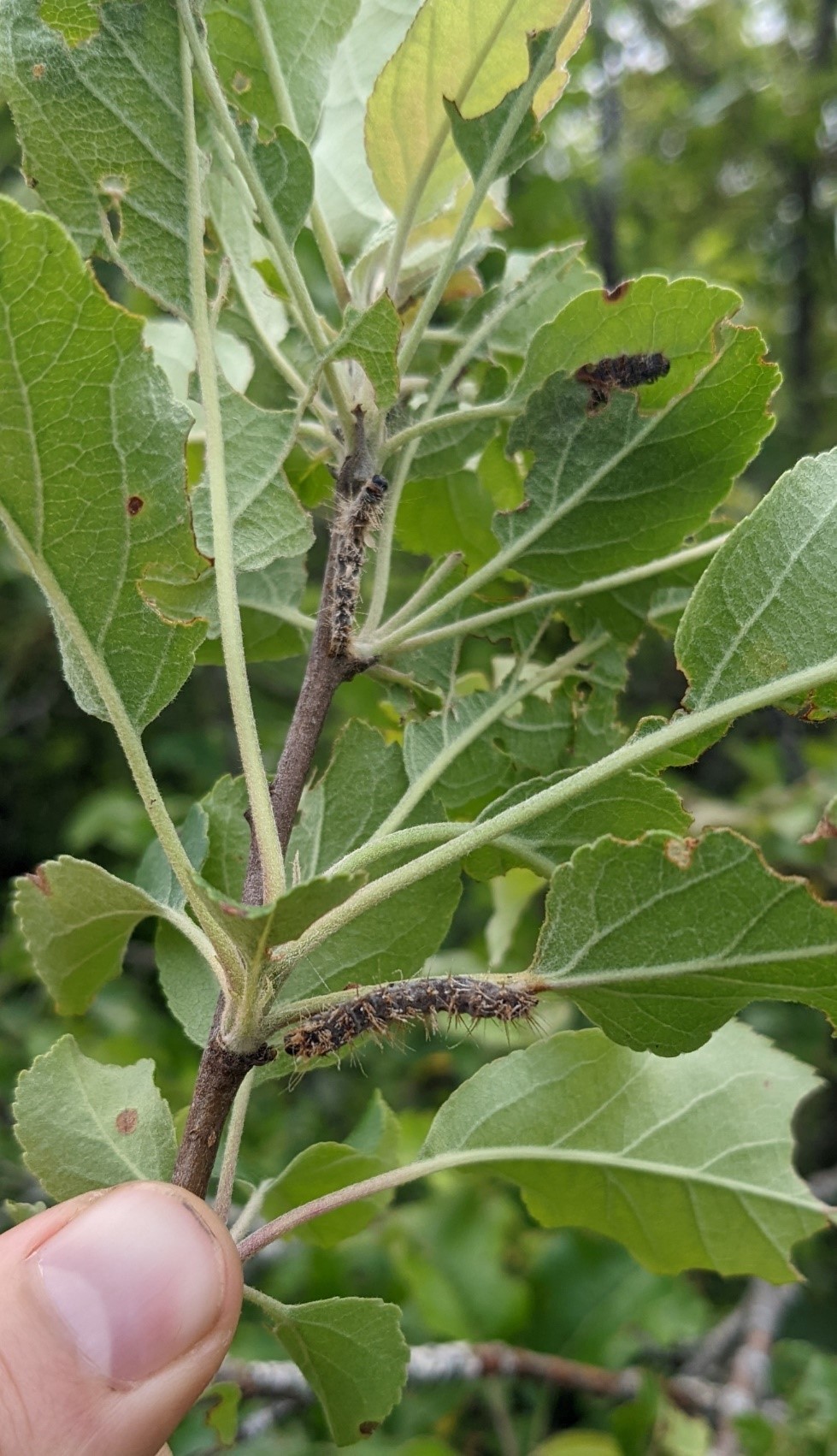 Two fungus killed caterpillars in Turner, ME.
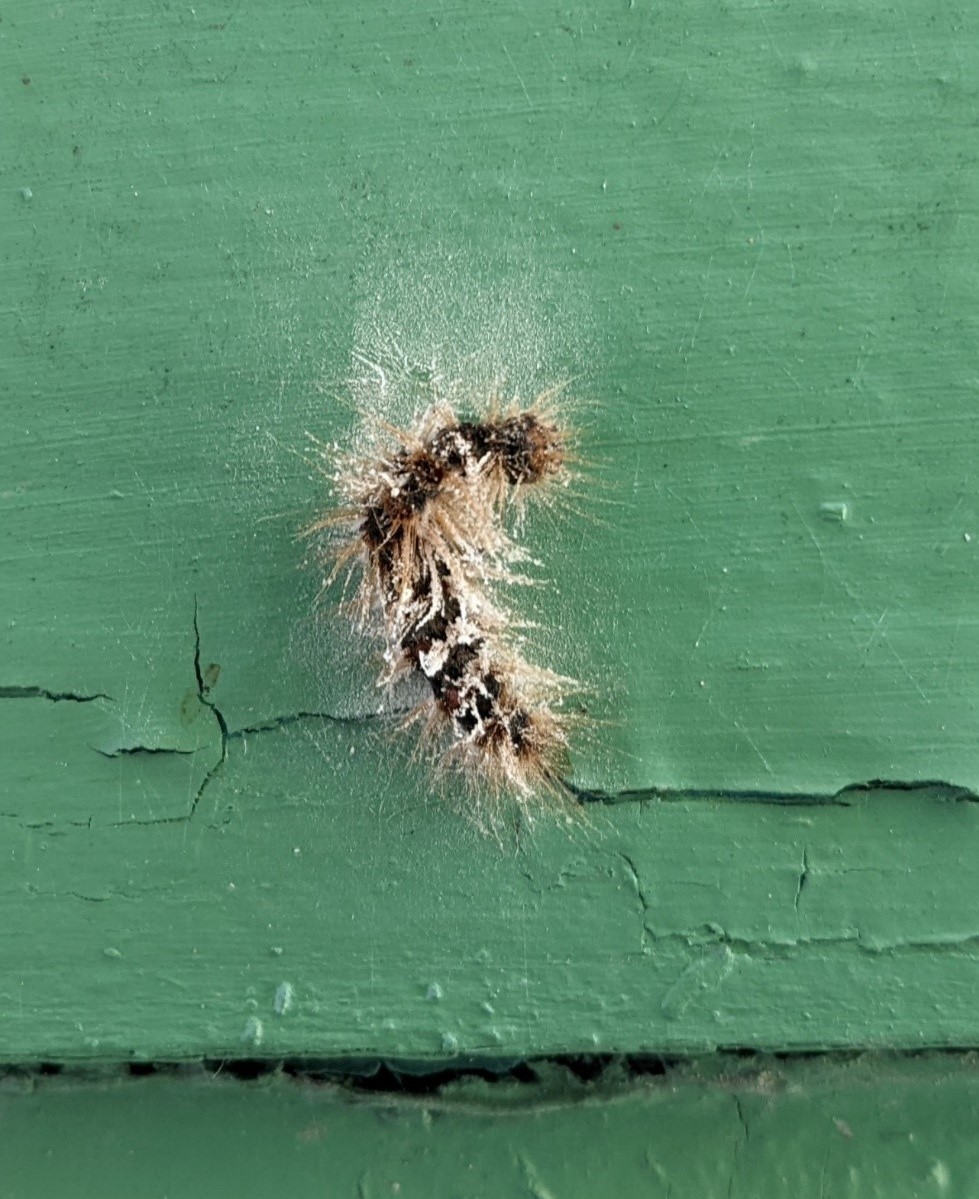 Fungus killed caterpillar producing spores that will come into contact with other caterpillars in Augusta, ME.
Contact 211 Maine for answers to frequently asked questions on browntail moths:
- Dial 211 (or 207-874-2211)
- Text your zip code to 898-211
Or visit our website.
More Browntail Moth Updates
We have received many reports of other caterpillar activity and wanted to use this update as an opportunity to highlight that.
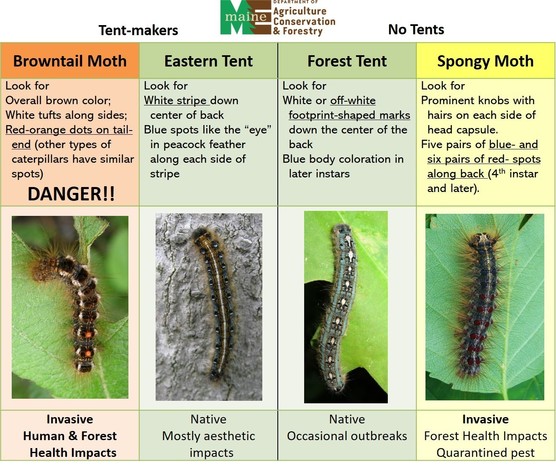 Comparison of several hairy caterpillars found in Maine.
Starting in the rooftop of Maine, this is the third year where you can readily find feeding by spruce budworm larvae. Signs of this damage won’t hit the casual observer in the face, but if you know what to look for, you’ll find it. The preferred food is balsam fir and spruce. Starting in the early 1990s and up until 2020, the only ones finding budworm larvae in the trees in Maine were their natural enemies.
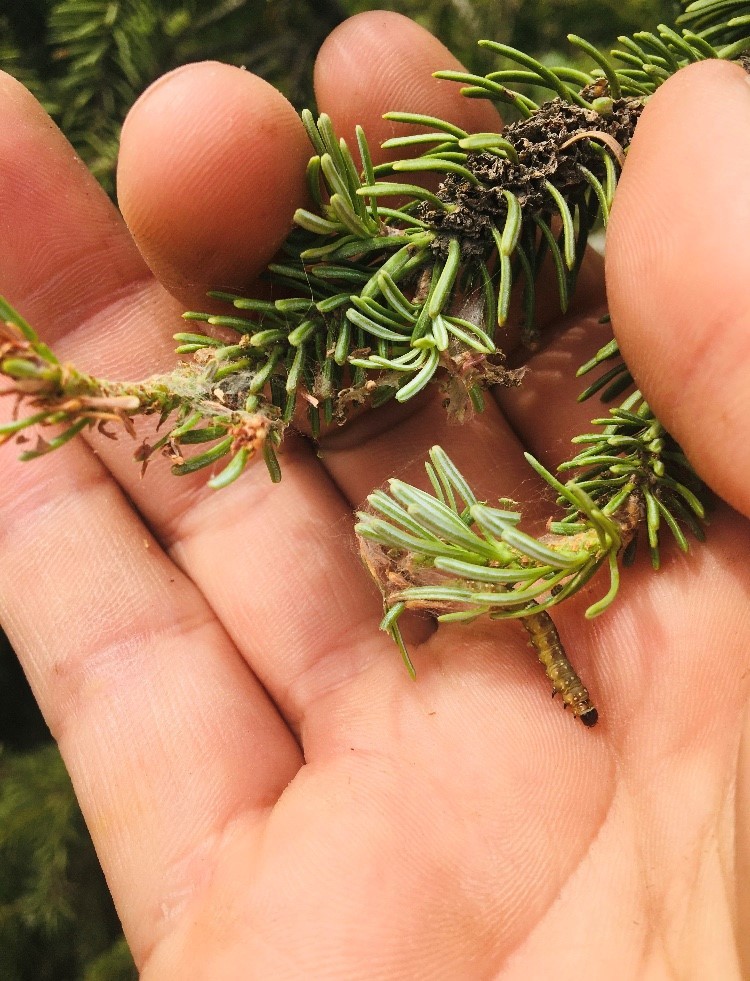 Spruce budworm caterpillar with feeding damage.
Also, in northern Aroostook County, forest tent caterpillar has defoliated patches of aspen and other hardwoods in towns such as Caribou, New Canada, Fort Kent, Frenchville, Madawaska, Van Buren, Wallagrass, Winterville Plt, and Woodland. This is the second year we’re seeing higher populations of this native species. Although outbreaks usually subside without lasting damage to the forest, sometimes significant tree damage does occur. According to degree day projections, feeding by this caterpillar should be wrapping up in northern Maine sometime around Father’s Day weekend.
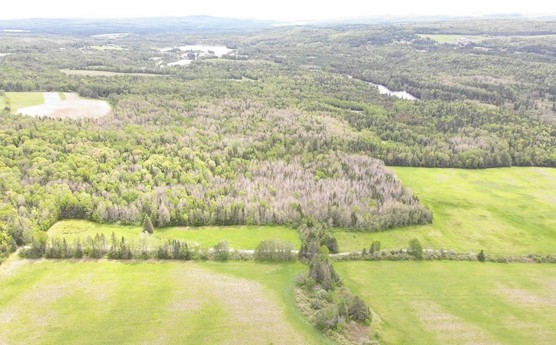 Defoliation caused by forest tent caterpillar in northern Maine. Courtesy Keith Draper, Forest Ranger, MFS.
Heading to Western Maine, the spongy moth (formerly gypsy moth) is stripping trees bare of foliage across a broad area of hardwood forest and backyard trees. In addition to western Oxford County, areas with severe populations include a large area centered around Jay and small pockets in Passadumkeag, T3 ND, and Millinocket. Again, this is the second year of known significant impact from this insect in all except the Jay area, where under 20 acres of damage was noted in 2020 (the Jay area saw more than 14,000 acres of defoliation in 2021, and more than 55,000 acres were mapped state-wide last year). After they’ve exhausted the hardwoods, this species will feed on conifers (and almost anything else green and growing). When heavy, this feeding can kill conifers in a single year. Depending on the region and weather, the spongy moth may have several weeks yet to feed.
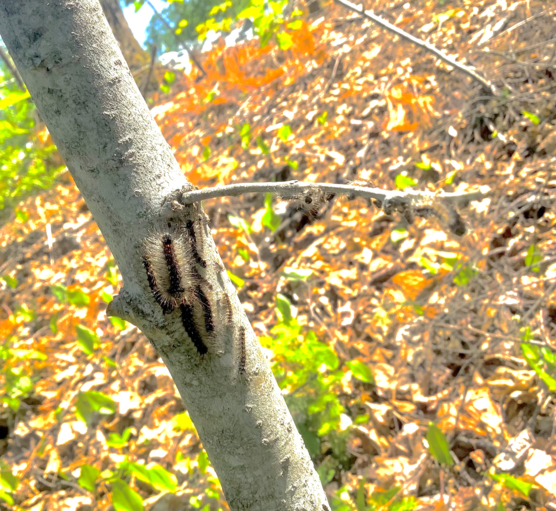 Spongy moth larvae, Passadumkeag, ME.
In coastal Maine, noticeable winter moth populations have been reported from Kittery to Mount Desert. This hardwood defoliator has been active in pockets throughout that region since at least 2012. In concert with established natural enemies, an introduced biocontrol agent, Cyzenis albicans, has effectively curtailed populations of this pest in southern New England. We are working with the US Forest Service and the University of Massachusetts, Elkinton lab, to duplicate that success here in Maine. Unfortunately, despite our efforts, populations continue to pop up in new places and plague areas near releases. Biocontrol of forest pests is a long game, and we expect this to be successful in the long term, as seen in southern New England. Feeding is wrapped up or will be soon. If you had defoliation by this caterpillar, be aware you can move them to new places in soil from now through the end of the year.
 Collecting winter moth caterpillars for biocontrol assessment and rearing.
What can I do?
Please help us understand where else these caterpillars and disease agents are active. Please let us know:
What about my trees?
Often by the time people start to recognize the potential for damage, the time for planning and implementing management has passed. That time has passed for browntail moth and winter moth in all areas and spongy moth and forest tent in many circumstances. In locations where management of the caterpillar populations is deemed necessary, plan to assess the need for 2023 based on available population indicators:
- Look for spongy moth and forest tent caterpillar egg masses in late fall or winter,
- Monitor adult winter moth activity between Thanksgiving and New Years (be like Motel 6 and leave a light on, then look and see who has visited it, or band hardwoods in your yard in early November to get a handle on numbers. Those bands can be left, and the trunk below them treated with horticultural oil in very early spring to kill eggs that are concentrated there by trapped females. However, they are unlikely to protect individual trees from an infestation in heavily impacted areas),
- Scout for winter webs of browntail moth late-fall through winter,
- Reach out if you have seen defoliation impacts from spruce budworm.
If you need additional assistance in figuring out how to scout, please reach out to us later in the summer or early fall.
Forests recover from defoliation events, even if it is not always in ways we might choose. Individual trees may recover without impact or with decline evident (especially with multi-year defoliation events or multiple stressors) or may die from repeated defoliation or defoliation in combination with other stress agents. In most cases, Maine landowners will not opt for management of forest infestations. There are notable exceptions, such as spruce budworm in managed forests and forest tent caterpillar outbreaks in commercial sugarbush operations. In managed forests, consider delaying entries for partial harvests until after the outbreak subsides and the trees recover. Partial harvests create temporary stress, and when they happen in combination with a defoliator impact can lead to unwanted effects on the trees left to grow.
In contrast to forests, many more people consider managing outbreaks like these in select trees around homes and businesses to preserve the trees’ health for the long term. Other measures important for ornamental tree health are to support them with supplemental watering during dry periods and make green spaces like yards welcoming for natural enemies of insect pests. Many natural enemies, such as flies and wasps, are also pollinators. Providing diverse flower resources throughout the growing season can help their populations. Reducing the use of broadcast applications of broad-spectrum insecticides and using an integrated approach to pest management for things such as control of insects in lawns and biting flies and ticks is another critical step towards supporting the natural enemies of these hungry caterpillars.
We appreciate your reports of forest damage and your interest in forest health.
Was this update forwarded to you? Subscribe for Updates to get them directly!

|